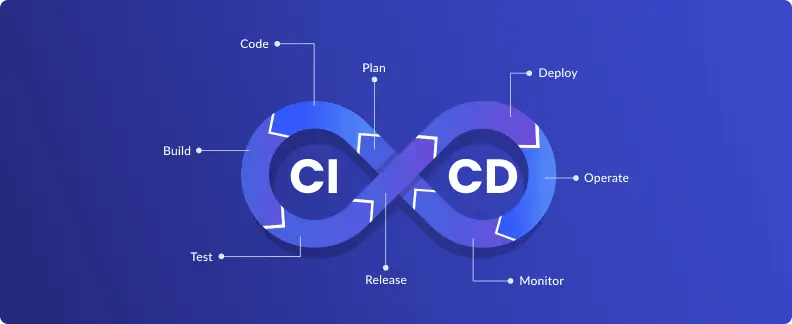Loading.....
Trends Shaping the Future in Modern Software Testing World
In the ever-evolving landscape of technology, software testing services play a pivotal role in ensuring the quality and reliability of software products. As businesses continue to rely on software to drive their operations, the demand for robust testing services is on the rise. It is an essential part of the software development process, ensuring that applications are reliable, secure, and function as intended. As technology continues to advance, the future of software testing services is also evolving.

Types of Software Testing
1. Manual Testing
Manual testing is a crucial phase in the software development life cycle, wherein human testers meticulously evaluate an application or system to identify defects, verify functionality, and ensure it meets quality standards. Testers follow predefined test cases or explore the application organically to assess its usability, functionality, and overall user experience. Manual testing is particularly valuable for scenarios where human judgment is necessary, such as evaluating design aesthetics, usability, and subjective aspects of an application. Additionally, it plays a vital role in exploratory testing, where testers actively search for defects without predefined scripts, making it an adaptable and versatile approach.
2. Automated Software Testing
Automated software testing, on the other hand, leverages automation tools to execute test cases. It is a highly efficient way to validate large, repetitive test scenarios, ensuring that software functions consistently across different environments. Unlike manual testing, which relies on human intervention, automated testing involves the use of scripts, test frameworks, and testing tools to perform repetitive and complex tasks. This method aims to identify bugs, glitches, and performance issues early in the development cycle, reducing the likelihood of defects reaching end-users.
3. Functional Testing
Functional testing is focused on validating whether the software meets its intended functionality. Testers assess individual functions or features to ensure they perform as expected. Common subtypes of functional testing include unit testing, integration testing, system testing, and acceptance testing. Each of these subtypes targets specific aspects of functionality verification.
- Unit Testing: Testing individual components or units of code in isolation to ensure their correctness.
- Integration Testing: Verifying the interaction between different components or modules within the software.
- System Testing: Assessing the entire system's functionality and compatibility with external systems.
- Acceptance Testing: Confirming that the software meets user requirements and can be accepted for release.
4. Non-functional Testing
Non-functional testing assesses the aspects of software quality that do not relate directly to functionality. This includes performance testing, security testing, usability testing, and compatibility testing. Non-functional testing ensures that software not only works correctly but also delivers a satisfying user experience while being secure and scalable.
- Performance Testing: Assessing the software's responsiveness, speed, and scalability under different load conditions. It helps ensure optimal performance.
- Security Testing: Identifying vulnerabilities and weaknesses in the software's security measures to protect against potential threats.
- Usability Testing: Evaluating the user-friendliness and overall user experience to make the software intuitive and easy to use.
- Compatibility Testing: Ensuring that the software operates smoothly across various platforms, browsers, and devices.
Key Software Testing Trends Shaping the Future
1. Shift Left Testing
One of the prominent trends in software testing is the concept of "Shift Left" testing. Traditionally, testing has been conducted towards the end of the development cycle. However, with the increasing adoption of Agile and DevOps methodologies, testing is moving closer to the beginning of the software development process. This shift aims to identify and address issues early, reducing the cost and effort required for bug fixes. Automated testing tools and practices are crucial in enabling this transition, allowing for faster feedback and more efficient testing processes.

2. AI and Machine Learning in Testing
Artificial Intelligence (AI) and Machine Learning (ML) are revolutionizing software testing. AI-powered testing tools can generate test cases, predict potential defects, and automate repetitive testing tasks. ML algorithms analyze large datasets to identify patterns and anomalies, improving test coverage and efficiency. As AI and ML technologies continue to advance, they will become integral to the future of software testing.
3. Continuous Testing and CI/CD
Continuous Testing is a fundamental component of Continuous Integration/Continuous Delivery (CI/CD) pipelines. CI/CD practices involve the frequent release of software updates, and continuous testing ensures that each code change is thoroughly tested. This includes unit testing, integration testing, and end-to-end testing. With the increasing adoption of CI/CD, software testing services must adapt to provide rapid and automated testing at every stage of development and deployment.

4. Test Automation
Test automation is a cornerstone of modern software testing services. Automation frameworks, tools, and practices continue to evolve, offering greater efficiency, scalability, and coverage. Automated testing reduces manual effort, accelerates testing cycles, and enhances test repeatability. Test automation will remain a crucial focus in the future of software testing.

5. Performance Testing and Scalability
As software applications become more complex and serve a global audience, performance testing becomes paramount. Software testing services will need to ensure that applications can handle high loads and remain responsive under various conditions, including peak traffic. Scalability testing will be crucial to identify bottlenecks and optimize performance.
6. Security Testing
With cyber threats becoming more sophisticated, security testing services are more vital than ever. Penetration testing, vulnerability assessments, and code scanning are essential to identify and mitigate security risks in software. The future of software testing will include a stronger emphasis on security testing to safeguard against data breaches and vulnerabilities.
7. Test Data Management
Managing test data is a critical aspect of testing services. Solutions for generating and managing test data efficiently, securely, and in compliance with data privacy regulations will be in high demand. Test data must accurately simulate real-world scenarios to ensure comprehensive testing.
8. Shift Right Testing
While there is a significant push to shift testing left and catch defects early, there is also recognition of the importance of ongoing monitoring and testing in production environments. "Shift Right" testing involves techniques like A/B testing, canary releases, and user feedback analysis to ensure that software continues to perform optimally post-deployment. This approach is gaining prominence and will be a key component of future testing strategies.
9. Crowdsourced Testing
Crowdsourced testing is gaining traction in the software testing industry. Companies leverage crowdsourced testing communities to get real-world feedback on their software from a diverse range of users and devices. This approach provides valuable insights and helps identify issues that might be missed with traditional testing methods.
10. Blockchain Testing
Blockchain technology is gaining wider adoption in various industries, from finance to supply chain management. Testing services specific to blockchain applications will become more prevalent to ensure the security, functionality, and integrity of decentralized systems. Blockchain testing will be a specialized niche within software testing services.
11. AR/VR Testing
With the growing popularity of augmented reality (AR) and virtual reality (VR) applications, specialized testing services will be required to ensure these immersive experiences function as intended. Testing in AR/VR environments presents unique challenges, including user experience testing and device compatibility testing.
12. Compliance and Regulatory Testing
Compliance with industry-specific regulations such as GDPR (General Data Protection Regulation), HIPAA (Health Insurance Portability and Accountability Act), and others is crucial for many software applications. Specialized testing services will be required to verify that software meets legal and ethical standards, particularly in industries with stringent regulatory requirements.
The Opportunities Ahead
The future of software testing services presents exciting opportunities for professionals and organizations:
- Career Growth: As technology evolves, there will be a continuous demand for skilled software testers who can adapt to new tools and methodologies.
- Cost Reduction: Automated testing reduces costs in the long run by speeding up testing processes and improving efficiency.
- Higher Quality Software: With advanced testing techniques, organizations can deliver higher quality software, resulting in improved customer satisfaction.
- Competitive Advantage: Businesses that invest in cutting-edge testing services can gain a competitive edge by delivering more reliable and secure software products.
Conclusion
In conclusion, the future of software testing services is dynamic and multifaceted. Automation, AI, and ML technologies are driving efficiency and accuracy in testing processes. Security, compliance,and performance testing are becoming increasingly critical in the face of evolving threats and complex software ecosystems. As software development methodologies continue to evolve, testing services must adapt to provide rapid, comprehensive,and reliable testing solutions.The integration of testing throughout the software development lifecycle, from "Shift Left" to "Shift Right," is essential for delivering high-quality software in an increasingly competitive and fast-paced digital landscape.
 Back to blog
Back to blog












